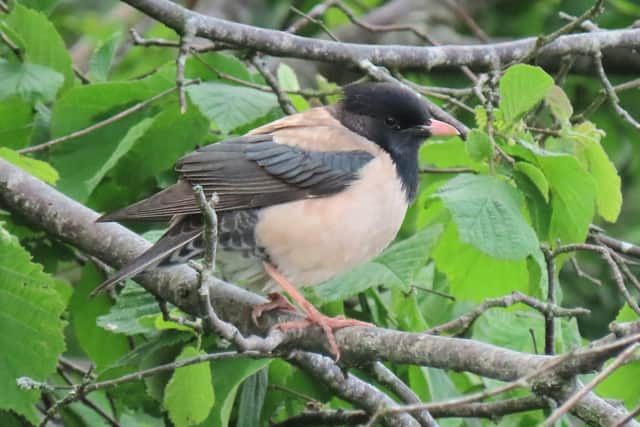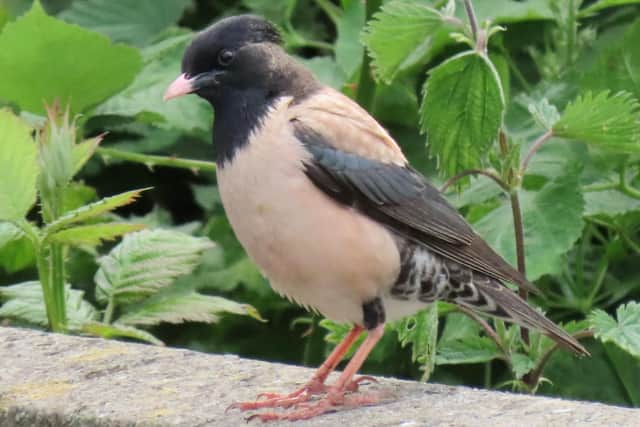Sustainable Scotland: Watch the birdies swapping Asia for summer in Aberdeenshire and other UK locations
Rosy starlings, a cousin of the well-known common starling, have been seen feeding at bird tables up and down the nation.
Wildlife charity RSPB has been inundated with video footage and photographs of the eye-catching birds from locations such as Aberdeenshire, Llandudno, Carmarthen, Rathlin, Dorset and Scarborough, and more.
Advertisement
Hide AdAdvertisement
Hide AdThe species spends most of the year in eastern Europe and Asia, only occasionally turning up in western Europe and the UK during the breeding season from May to July.
There are usually only around 50 sightings here each year, but sometimes there is an influx.
It’s not known for certain what brings them to these shores, but experts believe it could be down to warmer spring weather bringing the insects they eat further west.
“It’s always so wonderful to hear that rosy starlings are visiting the UK,” said RSPB wildlife adviser Katie Nethercoat.


“We’ve had pictures and reports sent in from our wonderful supporters and members already and we’re likely to receive more from across the UK in the coming weeks.”
The pink-hued birds are very similar in size and shape to their technicolour common starling relatives, and even gather in the same huge flocks.
The crucial difference, as the name suggests, is the distinctive pink ‘vest’ on their front and back and matching pink beak.
Males also sport a shaggy crest on their head which is often on full display during the breeding season.


Advertisement
Hide AdAdvertisement
Hide AdIndividuals have been sighted in various places across Scotland in recent years, as far afield as Wester Ross, Renfrewshire, Lochaber and East Lothian as well as the west coast islands of Skye and Tiree and on Fetlar in Shetland.
“This time of year is wonderfully busy, with breeding season seeing a whole host of birds and their young to-ing and fro-ing in our gardens and greenspaces,” Ms Nethercoat said.
“Couple this with the arrival of overseas visitors on migration, especially rarer birds like these rosy starlings, and it’s definitely an exciting time of year to be watching out for our feathered friends.”
Members of the public are being encouraged to keep bird tables and feeders stocked up with water and food, especially suet and fat balls, to help the rare visitors recharge their energy after their epic journey.
Ms Nethercoat added: “Rosy starlings often hang around with other starlings and turn up in gardens, so be sure to keep your feeders filled and your eyes peeled.
“It’s also a good idea to put out some fresh water, especially when it’s particularly hot – they’ll relish the chance to have a bath and a drink after the long flight.”
Other steps which benefit a range of wildlife include erecting bug hotels, nest boxes and hedgehog highways.
Comments
Want to join the conversation? Please or to comment on this article.
